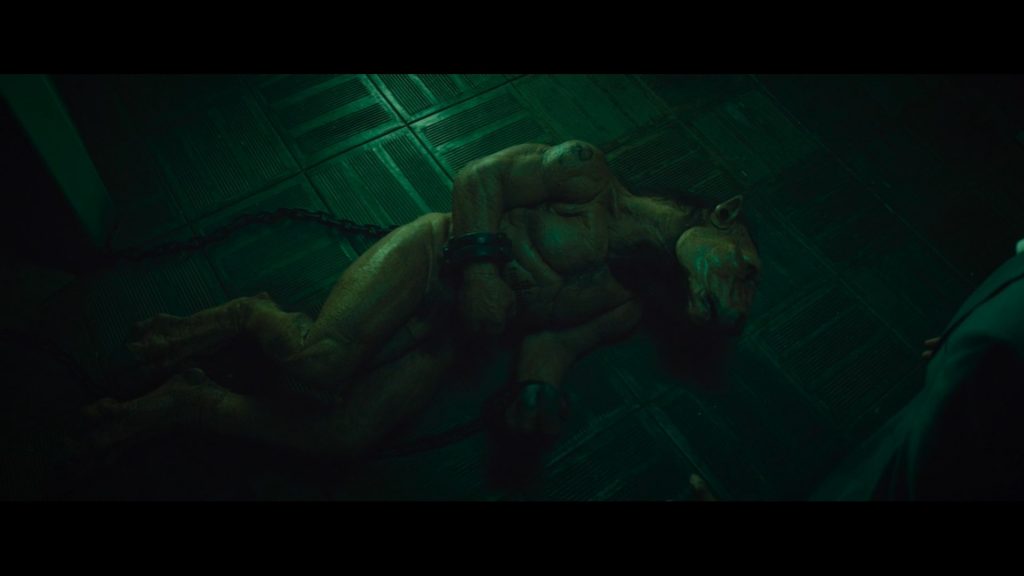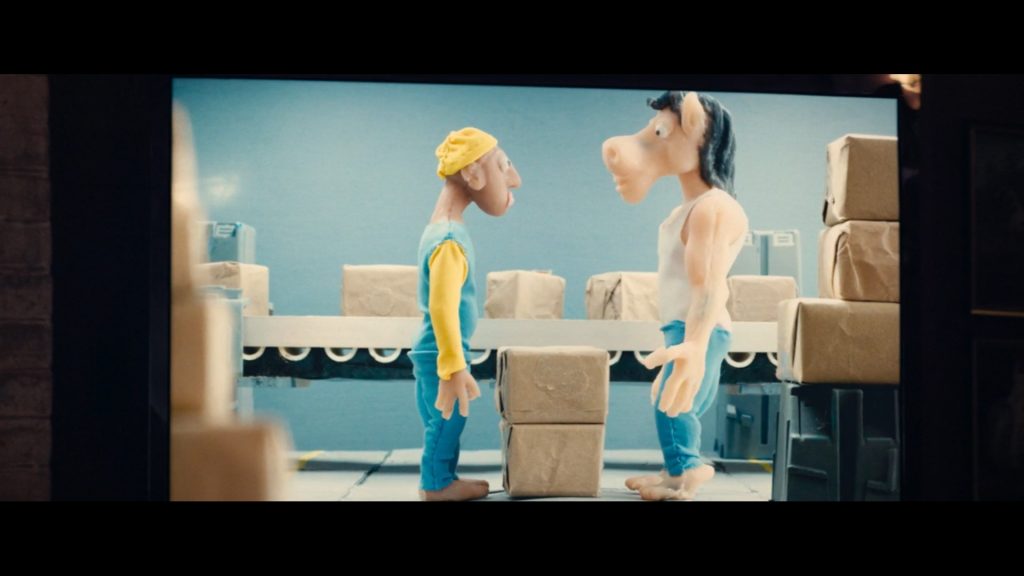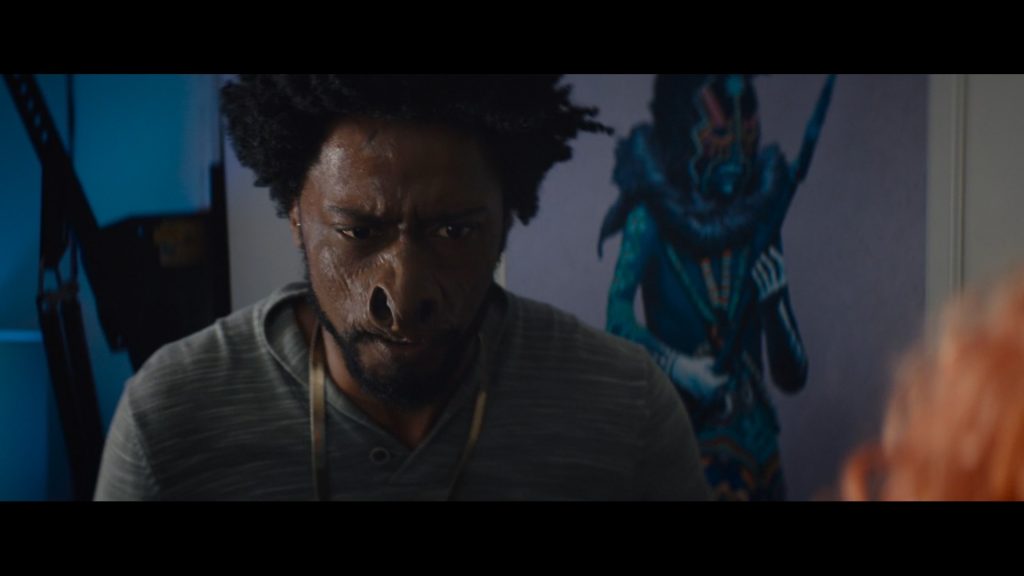Boots Riley’s debut feature has been praised for its portrayal of the callous nature of capitalism in modern America. The overarching message throughout is that the efficiency of the labourer is paramount to economic success and is valued more than human life, with this ideology being brought to life with the Equisapians, a half-human/half-horse hybrid, engineered by Worryfree as the next evolutionary step in human productivity. Parallels can be drawn here to Boxer in Orwell’s Animal Farm, the most dedicated labourer who becomes lame and gets taken to slaughter as a result, showing the disposable nature of the labourer. We are introduced to two different representations of Equisapians, the reality of the suffering creatures that Cash finds in the bathroom stalls, and the Claymation version in Lift’s commercial.
Cash encounters the reality of the Equisapian unwittingly in the dimly lit bathroom, at first mistaking the tuft of hair sticking out from above the stall to be human. The green hues and dingy, run-down appearance of the room create a complete shift in tone when compared to the opulent decor seen so far in Lift’s house, creating a sense of dread and tension. When the creature is finally revealed to us, it immediately falls to the ground in shackles, screaming and writhing around in pain. Cash is horrified by his discovery, and, notably, he is always physically above the creature, with the high angled shot pointing downwards at ground emphasising this. This demonstrates that on a level of social hierarchy, Cash, as a human, is above the Equisapian whose sole purpose of existence is labour. The race politics here are apparent, we pity the incapacitated Equisapian as a suffering object but view it as nothing more than that, a concept explored in Saidiya Hartman’s Scenes of Subjection.[1]

‘Please, help me. I’m hurting.’ 
Claymation commercial.
This is in sharp contrast to the idealised situation shown in the commercial. Everything is brightly lit with highly saturated colours, with Claymation and female British voiceover work evoking the sense of a children’s show. In terms of placement, it is also striking that the Equisapian and human labourers are both stood tall facing each other as equals, with the Equisapian smiling at his human counterpart and both shown as being white. The use of animation in this sequence highlights the idea that Worryfree is selling a lie. The stark contrast between the two is symbolic of the lies sold to the labourer by capitalism, one of equality. The reality depicted is that higher-ups like Last live lavishly while the labourers are shackled to their low paying jobs to survive.
When asked why he chose horses to feature in his human/animal hybrid Riley said ‘…horses occupy a space of labour for us and it rings out in our lingo: Workhorse, working like a horse, horsepower. And then obedience, like: Dumb as a horse. Hung like a horse.’[2] This further emphasises the film’s message that human labourers are valued as nothing more than their efficiency and forced obedience to their employers, with the film ending with Cash beginning to transform into an Equisapian against his will.

‘Cash, what’s wrong?’
[1] Saidiya V Hartman, Scenes Of Subjection (New York: Oxford University Press, 2010), p. 8.
[2] Esther Zuckerman, “Director Boots Riley Breaks Down The Craziest Part Of ‘Sorry To Bother You’”, Thrillist, 2018 <https://www.thrillist.com/entertainment/nation/sorry-to-bother-you-ending-explained-boots-riley-interview> [Accessed 28 April 2020].